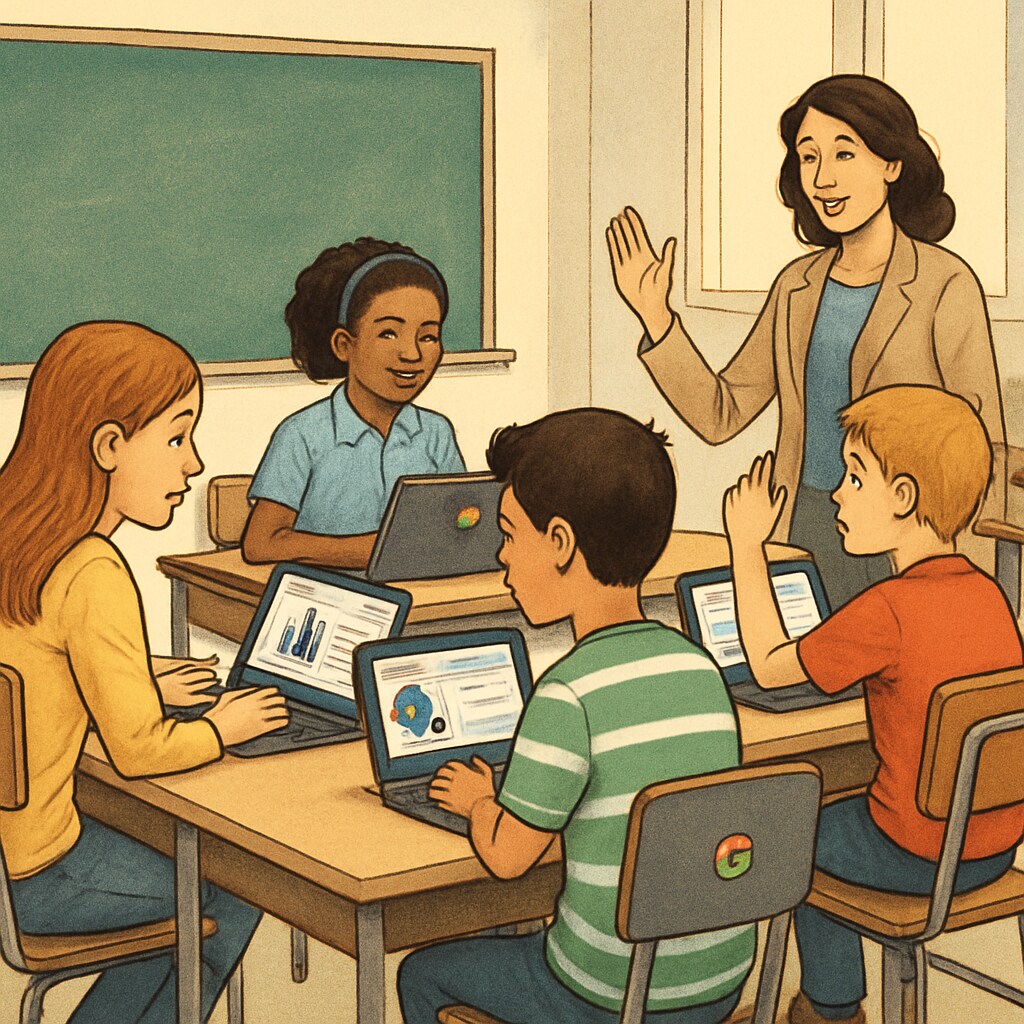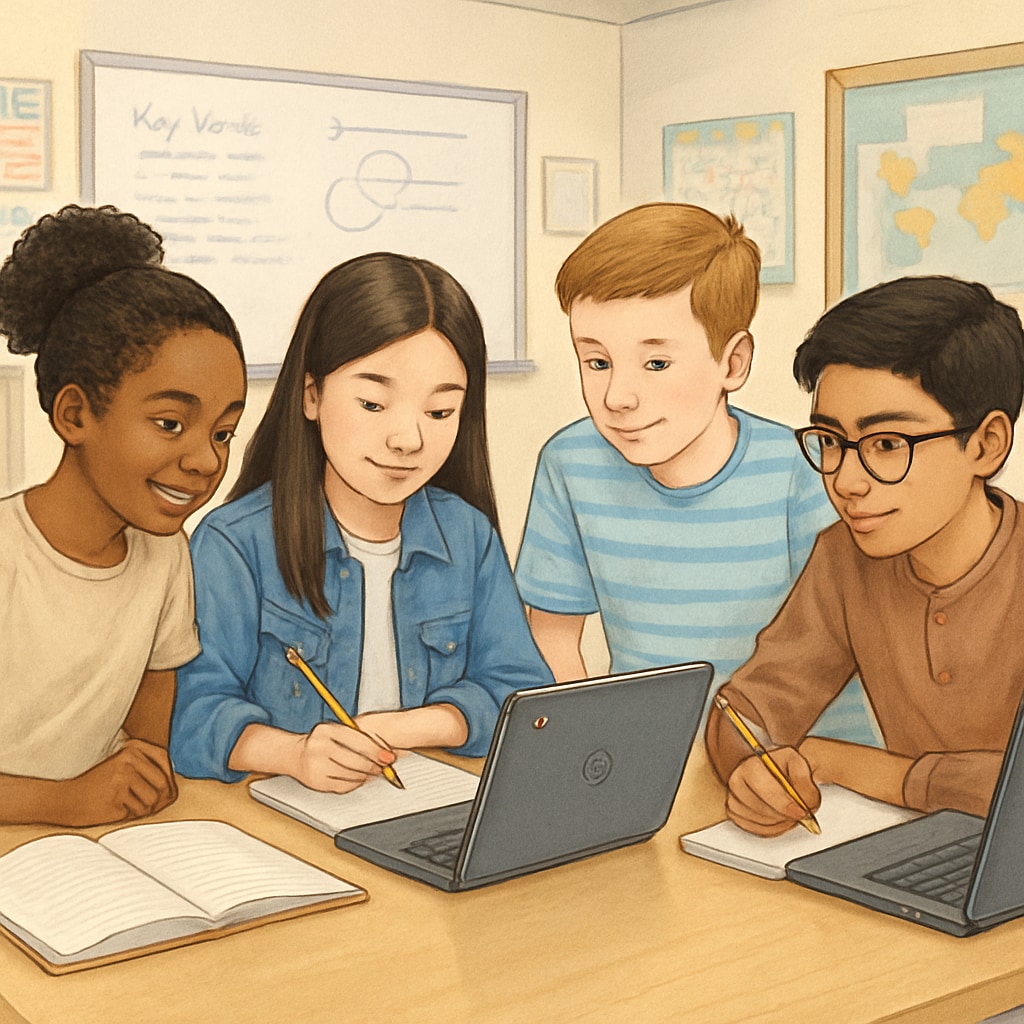In today’s K-12 classrooms, education technology, including tools like Chromebooks and interactive learning applications, is reshaping how students learn and teachers teach. By prioritizing efficiency, schools are optimizing resources and streamlining lesson delivery. However, this rapid technological evolution raises an important question: Are we unintentionally compromising students’ ability to develop critical thinking and curiosity? Understanding the balance between efficiency and cultivating independent thought is essential as we embrace these advancements.
How Education Technology Enhances Efficiency
Education technology has undeniably revolutionized classroom efficiency. Devices like Chromebooks allow students instant access to a wealth of online resources, eliminating the need for bulky textbooks and providing dynamic, up-to-date content. Moreover, platforms such as Google Classroom and learning management systems (LMS) enable teachers to organize assignments, track progress, and provide feedback in real-time.
This efficiency extends beyond administrative tasks. Adaptive learning tools, for instance, use algorithms to personalize lessons based on a student’s strengths and weaknesses. As a result, students can progress at their own pace, ensuring that no one is left behind. Additionally, gamified learning apps make subjects like mathematics and language arts engaging, helping students retain information more effectively.

However, while these technologies streamline learning, they often prioritize quick results over deeper understanding. This focus on efficiency may inadvertently sideline critical thinking, a skill crucial for problem-solving and innovation.
The Potential Cost of Critical Thinking
Critical thinking involves analyzing information, questioning assumptions, and drawing independent conclusions. It is a cornerstone of intellectual growth and essential in preparing students for real-world challenges. Unfortunately, many education technologies emphasize rote memorization or multiple-choice assessments, which may limit opportunities for deeper exploration and reflection.
For example, while a Chromebook can quickly provide answers to factual questions, it may discourage students from asking “why” or “how.” Over-reliance on technology may lead to passive consumption of information rather than active engagement. Additionally, apps designed to maximize efficiency often lack open-ended tasks, such as debates, essays, or problem-solving exercises, which are vital for fostering critical thinking.
Research also suggests that critical thinking flourishes in environments where students are encouraged to collaborate and discuss diverse perspectives. However, digital tools often isolate students, as they focus on individual progress rather than group interaction. This raises concerns about whether technology is inadvertently narrowing the scope of learning.
Striking a Balance Between Efficiency and Independent Thought
To ensure that education technology complements, rather than compromises, critical thinking, educators and policymakers must adopt a balanced approach. Here are several strategies to consider:
- Incorporate Open-Ended Assignments: Use technology to facilitate projects and discussions that encourage students to think critically and creatively.
- Emphasize Media Literacy: Teach students how to evaluate online information, question sources, and identify bias, turning devices like Chromebooks into tools for inquiry rather than mere convenience.
- Blend Technology with Traditional Methods: Combine the efficiency of digital tools with hands-on activities, such as debates, group projects, and experiential learning.
- Provide Teacher Training: Equip educators with the skills to use technology in ways that promote deeper learning and critical thought.
Moreover, schools should actively monitor the impact of technology on student engagement and intellectual growth, ensuring that efficiency does not come at the expense of curiosity.

Looking Ahead: The Future of Education Technology
As education technology continues to evolve, it is vital to prioritize tools that align with the broader goals of education. Emerging technologies like virtual reality (VR) and artificial intelligence (AI) have the potential to enhance critical thinking by simulating real-world scenarios and encouraging problem-solving. For instance, VR can immerse students in historical events or scientific experiments, fostering curiosity and deeper understanding.
At the same time, stakeholders must remain vigilant about the unintended consequences of over-reliance on technology. Striking the right balance will require collaboration between educators, developers, and policymakers to design systems that are efficient yet intellectually enriching.
In conclusion, while education technology offers remarkable benefits in terms of efficiency, it must be implemented thoughtfully to preserve and nurture critical thinking. By blending the strengths of digital tools with strategies that encourage curiosity and independent thought, we can ensure that K-12 education prepares students for both academic and life challenges.
Readability guidance: Use short, clear paragraphs and lists to summarize key points. Incorporate transition words like however, therefore, and in addition to maintain flow. Balance active and passive voice, with a focus on concise sentences.


